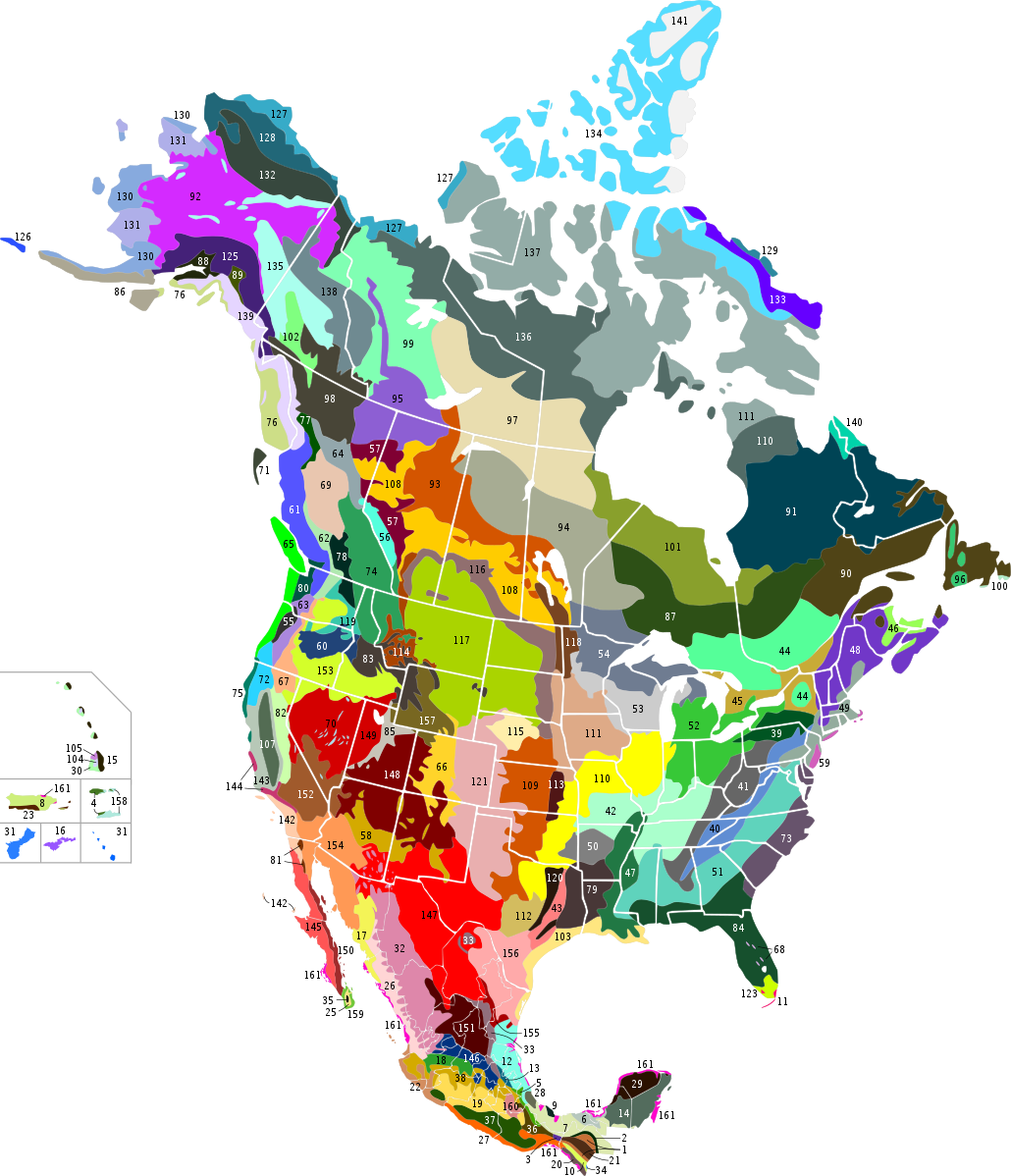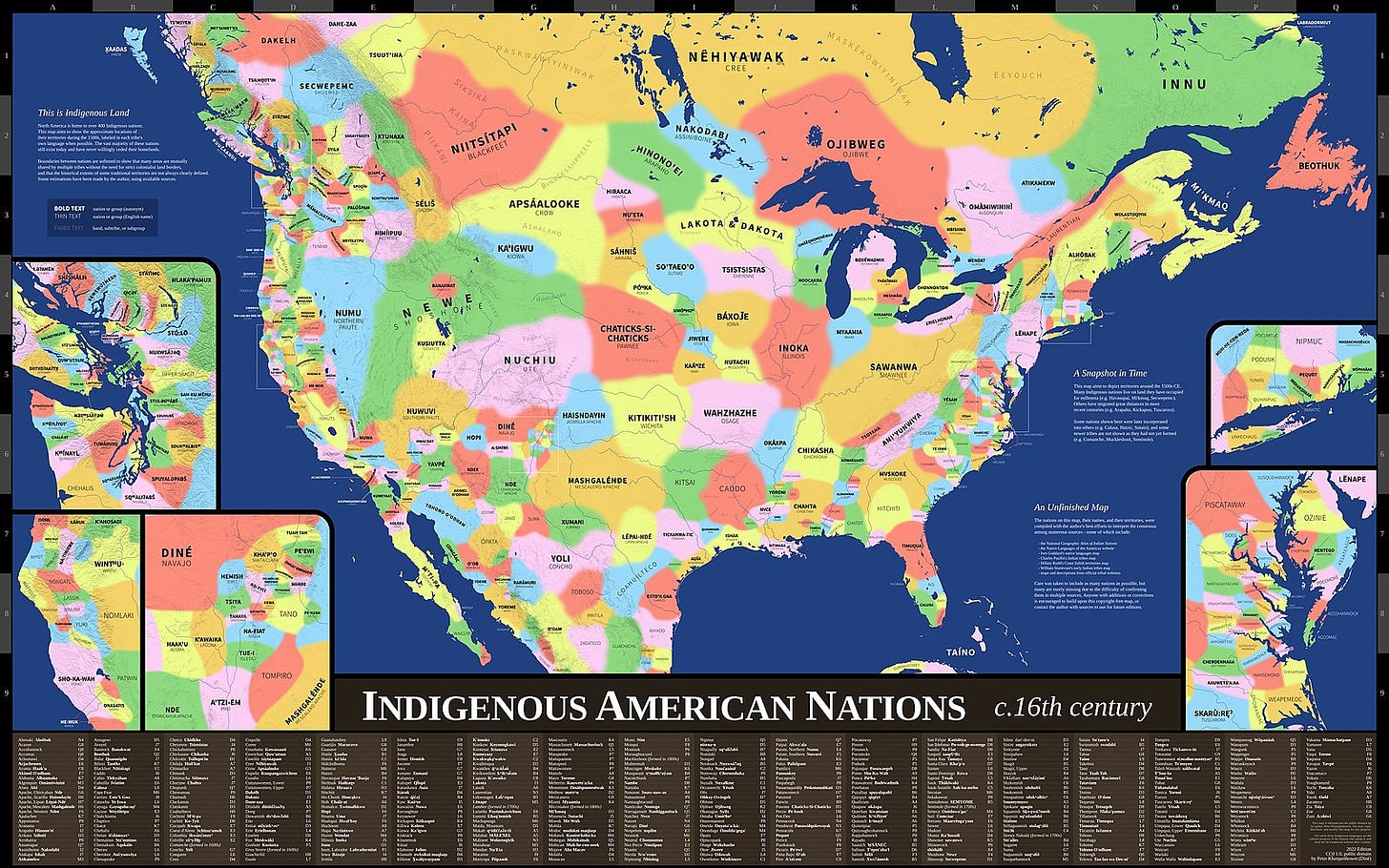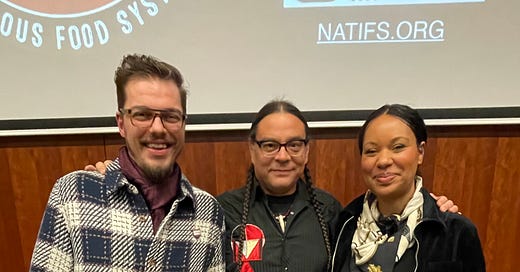A Sioux Chef at the American Embassy
Profound inspiration by the Sioux Chef, Sean Sherman in Berlin, Germany.
I can’t express how excited I am to have been invited to the American Embassy in Berlin for a round-table presentation and discussion by the righteous chef Sean Sherman. The event is on Thursday, November 16th… well, I am still in the past, not in attendance yet as today is Wednesday, November 15th.
My phenomenal girlfriend was invited, and technically I wasn’t. She is a Diversity, Equity and Inclusion consultant with her own company that is doing well, I mean very well since she got invited to the American Embassy for this event! She and her co-founder got invited, but her co-founder couldn't make it, so luckily I was next in line as her +1.
Bizarrely enough the embassy was excited to have me, and they responded with — and I will put this in a block quote:
“What a fitting guest! Thank you for bringing Otis along.”
They added an exclamation point and everything! I am so hyped to listen and meet Sean Sherman. It is extremely eerie that I wrote about him last week and previously in June… I mean like shakingly eerie and it feels like a sign. What are the chances?
The Sioux Chef at the American Embassy in Berlin
The talk was on “The (R)evolution of Indigenous Foodways – A Journey of Discovering, Reviving and Reimagining Native Cuisine.”
A horrible and devastating history of Indigenous American Indians was shared through slides by Sean Sherman. First, his story of working in kitchens in South Dakota, U.S.A. where he noticed there was everything except Indigenous cuisine or restaurants. Once he learned the ropes of the kitchen at a young age he moved to Minneapolis, Minnesota.
The reason for a lack of Indigenous available food or restaurants is that food is intertwined with language and culture. A dark side of American history made sure to eradicate as much of that language and culture as possible, which becomes an eradication of food culture and you are forced to another one, in this case, an American one.
North American History Begins with Indigenous History
What is colonialism? Its definition is: “the policy or practice of acquiring full or partial political control over another country, occupying it with settlers, and exploiting it economically.”
The colonial process started in 1620 but in the 1800s it became the deadliest moment in history for the Indigenous people. Through Indian homeland seizures, and the loss of Indigenous food access, such as the near extinction of Bison which was used for food, clothing, shelter, and tools. The erasure of Indigenous education such as what would have been learned from their ancestors like hunting, fishing, gathering and identifying plants and living sustainably, and everything else, like spirituality, medicine, and so forth.
Generations of Indigenous were stripped of so much through military-styled boarding schools in the United States and Canada which forced Western religion, and the English language, and abused children physically, sexually, and mentally with that trauma still strong and looming today.
Further tribal dismantling took place in the 1900s with over 100 tribes lost. Voting rights only took place in 1965. Sean Sherman was born in 1974 and grew up on commodity foods packaged in tins and cans, next to bags of flour and sugar.
The Indigenous diversity was lost especially through food. Reservations that had Commodity Food Programs, provided almost military-looking meals. The extremely diverse Ecoregions of the Americas were transformed into the unnatural squares and rectangles that you see on maps today. Unlike the natural flow of land.

As well as what American land looked like before colonial states and borders took hold. There is not one 90-degree angle to be found among Indigenous tribal areas.

Indigenous Food For The Win!
What are pre-colonial foods? Colonialism forced a massive loss to pre-colonial foods of wild foods, permaculture, native agriculture, seed saving, true seasonality, animal butchery, hunting, fishing, fermentation, cooking techniques, traditional medicine, and food preservation to name a very few.
If, and when you subtract beef, chicken, and pork from the gastronomical equation you are left with whatever moves become game, as Sean put it. Those three ‘pillar’ proteins didn’t exist in a pre-colonial diet. Food waste was not being an option, but a privilege we have become so used to, and dictates our options today.
The lack of biological acknowledgment in the West is haunting us every day. There are plants all around us that we know nothing about. From prairie turnips, seaweeds, roots, and, wild rice. Or to the opposite of what is dubbed a ‘food desert’ — an Indigenous of the desert sees only food and knows how to live with it.
Sean Sherman is a champion of keeping the incredible agricultural diversity and protecting it. We should fear the disappearance of vegetables and the vast array of them.
“Stop calling everything a weed, because that just means you don’t know what it is”
He is trying to break the cycle of government-reliant foods. In the reservation he knows so well, in Pine Ridge, South Dakota the average income is 8500$ a year. He is fighting to get indigenous foods back into tribal communities especially.
One thing that really stuck with me is him saying “Lawns are fucking stupid.” We need to use our land space better. We could use more permaculture landscapes and community gardens and share their uses.
Let’s run through the Indigenous diet and what the benefits are: healthy fats, low carb, healthy and varied proteins, large plant diversity, low salt, organic agriculture, it celebrates culture and regionality, and seasonality.
“We should be making pantries as our ancestors did by using the food that was around us, that makes us taste like where we are which makes us unique in our own region.”
He left us with an account of something that is rare in history. A female perspective, which history is not too keen on, and even more so an Indigenous one. This is his book recommendation called: Buffalo Bird Woman's Garden: Agriculture of the Hidatsa Indians. An account of Indigenous agriculture that shows the relevance and importance of her agricultural practices which would be cherished today.
There was a Q&A towards the end, I couldn’t help but raise my hand because I wrote about him and Dan Barber, and needed to hear his opinion on what I wrote here.
So my question was about Dan Barber and his Michelin-star restaurant, Blue Hill at Stone Barns, and his Green Michelin star. Why is it, that he is awarded prestigious awards when he grew a ‘heritage’ corn using the (Iroquaian) 3 sisters method and drying it out to make a polenta which gave him an epiphany due to the immense flavor which helped catapult him into a new tier of fame? How does that make Sean Sherman feel?
The Sioux Chef responded by saying if you have a multi-million dollar farm with big-time investors that help with your vision of growing these plants and creating a fine dining establishment to sell actual Indigenous ingredients — it makes you someone who is “Dripping in privilege.”
If that is not food for thought. Fuck if I know, what is.
A Small Stroll Home
After standing up and getting ready to leave, I couldn’t budge anywhere before thanking Sean Sherman, The Sioux Chef, and asking to take a picture with him. The stroll home left me with so much inspiration and awe of his purpose. A righteous (R)evolution of protecting and sharing what should be and the way things could be. He left me wanting to get my boots and hands dirty and plant some food and help with Indigenous foodways.
Maize-ly yours,
The Greasy Pen.
Thanks to my awesome girlfriend, and her mother for babysitting our daughter, to Sean Sherman, The Sioux Chef, and the American Embassy, and thank you for reading.





